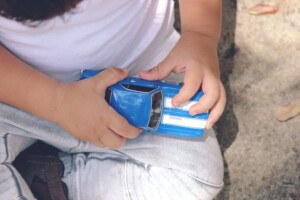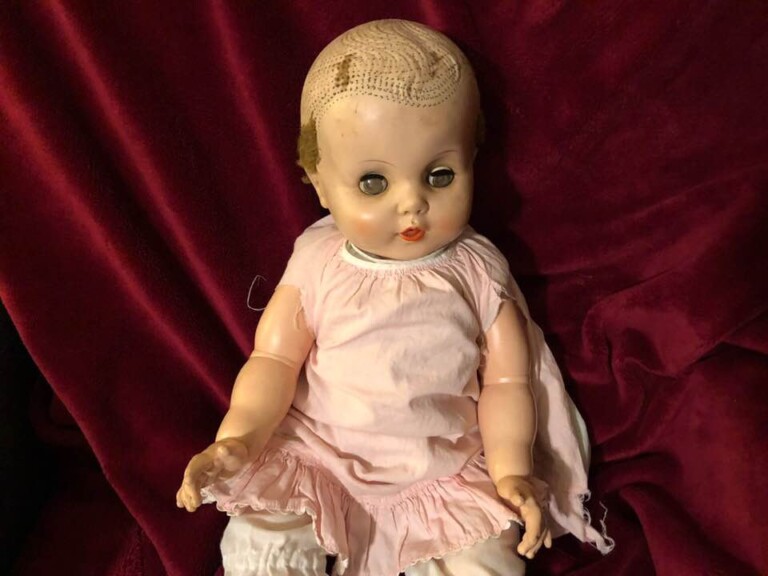Inside Activities with Kids from A to Z (and Other Thoughts)
 Help! The kids are home.
Help! The kids are home.
What is a mom to do when the kids are bored and mom is going berserk? When she needs inside activities for kids, where is she to turn?
While many kids will fend for themselves or find ways to entertain themselves and their siblings, there are just as many who don’t (or won’t.) Children should, for the most part, be capable of entertaining themselves, especially if they have siblings. Yet there are times when a little boost can help set the stage for self-entertainment. That’s why this list of activities can be a springboard to help you – and them – get started.
On your mark: Attitude
It’s been years since we had our half-dozen at home, and even days of foster care or respite are not as many as they used to be, yet I still remember those days and what it was like. If I could go back, there are some things I’d do differently (of course)
If I could do it over, the one thing I’d change is my attitude. Deep down underneath, when I had things I wanted to do or had kids underfoot who I wished would just-stop-fighting-and-get-along, I resented the interruptions in my schedule. There were times I was spontaneous and went with the flow, but sometimes, I resented the intrusion and became impatient. Those were times when re-taking Motherhood 101 would benefit everyone.
 Get ready: interruptions
Get ready: interruptions
For starters, the way your kids respond to this interruption of all things fun and plentiful to do will be a result of your attitude. If you’re seething inside, worried and upset, or tired and moping, they’ll pick up your attitude. They will know if they are wanted or a bother on any given day. When kids feel unwanted and unloved, it will show up in their behavior. They not only need to be loved, they need us to do things with them so they feel the love. Hence, this list of activities.
If you bleed your worries out, they will pick up that worry. You’ll see their worry in their actions, and it won’t be pleasant. Kids don’t know how to say, “I’m worried,” or “I’m afraid,” but they’ll show you by the way they act.
At the same time, our kids don’t need us to become their entertainment center. They really can learn to cope and be happy with things at home, and one of our jobs as parents is to teach them how. :-). One of the best ways is to help them develop their own activities that keep their interest.
Get set: become the thermostat, not the thermometer
You get to set the thermostat for your day. You also get to set the schedule. You’re the mom, and so you get to decide. Don’t let your kiddos badger you into giving in when you know what they need most.
You’ll find that if you take the time to get in the mix and play with them, they will more easily entertain themselves later in the day. What they do with your participation can be a catalyst for coming up with their own ideas and activities. Try it. You’ll see.
Another trick that worked for me was to promise I’d find work for them if they complained that they were “bored”. It’s amazing how the promise of a job to do got their creative juices flowing!
Choose items from this list that fit your family. Mix them up and do what works for you. Not all of them are conducive to all ages and varied sizes of families, so tweak them to fit your style and your need.

GO: Inside activities from A to Z.
Here’s your list. Have at it all the way from A to Z. These inside activities are a way to jump-start your kids.
- Activities. Find a special activity you can do each day. Ask your kids to come up with ideas of what they’d like to do that no one will ever do with them! Make a list and cross it off once it’s accomplished. This serves as proof later when your kids says you never do anything with them, or it’s soooo boring here!
- Baking. Seriously, use this time to do fun things in the kitchen. Once a day is probably all you can handle, but do the one thing. Tie it in with a book you read to the kids. Read a book about bears and make teddy bear pancakes. Make blueberry muffins and read Blueberries for Sal. Make monster cookies after reading about a monster. Read Stone Soup then let you kids help make it. Bring in math while you’re doing recipes! Add pennies to pancakes or quarters if you’re afraid kids will swallow the pennies). Let kids have a turn choosing a food item to make.
- Crafts and Cooking. Choose fun activities that encourage creativity and physical activity. Provide yarn, paper scraps, crayons, chalk, and anything else to give your kids a chance to serve their creative bent. Let them make a mess and have at it!
- Dig for Treasure. Look for the things you have in your house that can be educational. Send kids on a treasure hunt to see how many books, toys, etc. they can find that begin with a certain letter. They’ll find other treasures that they forgot were theirs – and more vices for entertainment!
- Encourage entertainment. Read a story to your kids and let them practice acting it out for an after-dinner performance. Bible stories or favorite nursery rhymes are also possibilities. Let the kids act out the story and have the adults guess what the story is about.
- FaceTime grandparents or lonely folks who have a phone; this helps your kids learn to share and give to others, and it will bless the folks at the other end of the phone.
- Games. How many games in your closet have you never played as a family? Get started. Include all the kids. Let each child take turns choosing the game of the day.
- Hopscotch. Put tape on floors in the house or outside. Time each kid and offer a prize for the winner. Make it an exercise event!
- Ice cream. Make your own, using a blender. Google a recipe. There are plenty out there, and you can teach math while you’re doubling recipes.
- Jumping jacks. Jokes. (As in exercise your body and your brain). Everybody needs to exercise. Make it happen by exercising with them. See who can come up with the best joke. Have a “joke jar” and read the jokes at mealtimes.
- Kindness counts. Help your kids write notes or letters to elderly friends, shut-ins, grandparents, or folks with birthdays. Send sympathy cards. This is a time to teach the importance of manners! Spend an evening together making your own cards and decorating them. Make a video of the kids playing together, singing, or talking and send it to family members.
- Laugh. Don’t forget to laugh! Have a laughing contest. Come up with your own cartoon or funny jingle. Learn to enjoy spending time together as a family and laugh together. A merry heart is a wonderful medicine for any illness.
- Money. Music. Hide money in obscure places when it’s time for your kids to help clean up their rooms. You can tell them how much money is hidden so they can get it all before they start sweeping or vacuuming. Hide it under their stash of clothes or in shoes in the closet. When their room/responsibility is tidy in the proper amount of time, they get to keep the change. If your kids are taking music lessons, keep the routine if possible. Make your own instruments with supplies in your house: pots and pans for drums; rice and corn in a tube; water in glasses; whistles.
- Night time. Be aware that nighttime can bring out fears kids have repressed all day. Pay attention to their hidden signals and talk about their fears. Portray confidence even if you don’t know where money is coming to pay the rent or bills.
- Old-fashioned. Pull out games from your childhood or ones from long ago. Teach your kids about what life was like when you were young. Have they ever seen a record album? A Polaroid camera? A dial-phone? Educate them about things of your past or their grandparents’ past. Get the grandparents (or an elderly friend or neighbor) involved and have your kids interview them. Make a list of questions to ask: what was a school day like? your favorite toy? what chores/jobs did you have when you were my age? what do you remember about going to town? a favorite snack? hobby or favorite pastime?
- Play with your kids. Make play dough, pizza, or do Puzzles (if you don’t have puzzles, cut up calendar photos or extra 8 x 10s of your kids and let them put themselves back together. If you have a hot air popcorn popper, spread a sheet on the floor and pop the popcorn without a cover. Watch your kids scramble to get some! See how many can catch popcorn with their mouth!
- Questions. Play 20 Questions. Plus, you must be sure to answer their questions. Stay in tune with what’s happening and answer the questions your kids have. Don’t shield them from truth, but don’t dwell on it so much that it becomes your focus in the day. Answer their questions, but don’t answer what they don’t ask. Tell the truth, and keep it simple.
- Rest. Get your rest. This is one of the best ways to stay healthy, both physically and emotionally. Use a quiet time each day to help calm frazzled nerves and relationships. Read to your kids every day, even if it’s just for five or ten minutes. You’ll increase their vocabulary, alertness, and teach life lessons.
- Stories. I’m a firm believer in Story Hour. If your kids are older, choose a book that can be read out loud in a week or two, one chapter a day. My kids still remember the summer I read Number the Stars to them. Each chapter end had them begging for more. Sew. Help your kids learn to sew or make masks. They can stitch by hand. Use what you have in your house, even if you have to cut up old clothing not worn anymore. Sort. “Hire” your kids to sort things for you; reward with hidden money at the bottom of a container. Sorting can include buttons, nails, screws, thread, yarn, and the junk drawer.
- Thermostat. Involve an older kid to help you keep the thermostat set at an even temperature. Ask him to help you with activities and attitudes. You’ll be amazed at the change of atmosphere if your “troublemaker” is tasked with this responsibility for a day or an afternoon. Trace your kids; use newspaper, old fabric, or any other paper to trace your kids and make “people cut-outs”. You can cut these “cut-outs” into gigantic puzzles.
- Undercover. Tell your kids you’re going undercover. Come up with a “Catch ’em doing good” game. You’re the undercover agent and when you catch someone doing something good, write it down. Keep it simple: the child who helped another child tie a shoe, the child who helped set the table when it wasn’t his turn, etc. Put slips of paper with the good deed on it in a hidden container. At the end of the day, get out the container and read your “reports”; give clues and let the kids figure out who did what. This encourages kids to think about their actions throughout the day.
- Variety. Kids need routine. They also need variety. Add variety to your schedule and your day so there is less boredom. Ask your kids to give you one idea of something you can do together that you’ve never done before. Go with the flow and don’t nix weird ideas.
- Water. Using water is a great way to have fun and soothing inside activities. Water balloons, water fights (outside, of course), a race through a sprinkler are all fun activities when it’s a warm day.
- Xciting. You can make this an exciting time instead of a drudgery. Set up tents in the house; make human pyramids; put the family together in a “pretzel”. Become an elephant (or other animal). Who wants to be the trunk, the tail, the legs?! Learn about the animal you’ve become.
- Yarn. Spin one! Plan a fun time of telling tales or stories that could be true but aren’t. See which kid comes up with the best one that convinces others it’s true. Tell a tale of when you were a kid – have them guessing which part are true and which parts are totally made up.
- Zig-zag. Set up a zig-zag course; call it an obstacle course or whatever you want. Use tables, chairs, doorways and furniture to make kids pass through. Have races.Time each kid to see which one can do it the fastest. By the time they’re done with this, they’ll be ready for a quiet time or down-time to relax.
Finish line
It doesn’t matter if you only choose a few of these inside activities. The purpose is to take these ideas and use them for your own. Mix them up, shake them out, and make them work for you. There are many more inside activities you can come up with. Maybe this list will help you come up with your own!
 This is a re-post from three years ago, and it was written during COVID when kids were home from school. These ideas are great for long weekends, the holidays, or any other time you’ve got kids underfoot and need ideas of something to do.
This is a re-post from three years ago, and it was written during COVID when kids were home from school. These ideas are great for long weekends, the holidays, or any other time you’ve got kids underfoot and need ideas of something to do.







Thank you! I printed the list and I am excited to try the ideas.